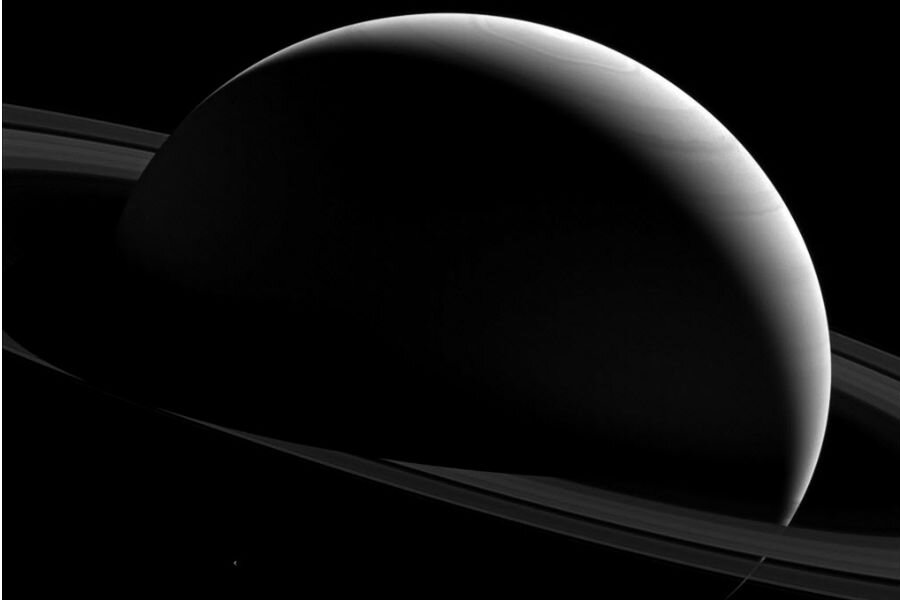Hidden ocean may exist on another of Saturn's moons, say scientists
Loading...
A new study indicates that Dione, one of Saturn's 62 confirmed moons, may have a subsurface ocean.
Dione is now the third of Saturn's moons thought to have a substantially large volume of water locked beneath its icy surface. Because water is a key factor in sustaining life on Earth, scientists have considered the possibility for years that subsurface oceans on Saturn's moons could harbor extraterrestrial life beneath the ice.
Now Dione joins Titan and Enceladus as a possible source of extraterrestrial life around the ringed planet – or at least, as presenting further evidence that liquid water is not so rare beyond our own planet, as it was once believed.
Researchers from the Royal Observatory of Belgium used data from NASA's Cassini probe to support their findings, published Tuesday in Geophysical Research Letters. The probe detected certain gravitational oddities that subtly shifted Cassini's course as it passed Dione. The researchers found that these oddities, combined with certain geometric features of the moon, could be explained by a liquid, subsurface ocean.
The study also examined Enceladus, which discovered that the other Saturn moon's libration – an oscillation that occurs as the moon wobbles back and forth during the course of its orbit – indicates that Enceladus' ocean is closer to the surface than Dione's. Dione's libration is too subtle for Cassini to detect, indicating that the ocean does not start until about 100 kilometers (62 miles) below the surface of the moon.
Scientists continue to discover more liquid oceans hiding in moons orbiting Jupiter and Saturn. These moons are balls of ice, too far from the sun to receive enough heat to thaw out. So how do these moons get enough heat to sustain a liquid ocean?
The Monitor's Eva-Botkin-Kowacki explained the prevailing theory in an article about Europa, one of Jupiter's moons:
Given Europa's distance from the sun, the presence of liquid water on a frigid moon (minus 260 to minus 370 degrees F. on its surface) might seem unusual. But scientists point to gravity to explain the mysterious ocean world. Jupiter's tidal forces cause the moon to flex as it orbits the planet. As it's pulled, friction and heat are produced, preventing the liquid water from freezing, they hypothesize.
These "ocean worlds" are intriguing because they might provide a relatively survivable liquid medium for life to form on moons within our solar system, outside the comfortably warm "habitable zone" Earth occupies. According to the study, Dione's ocean has likely been around just about as long as the moon has existed itself, and if that ocean has contact with a rocky core, there has been plenty of time for potential life to develop.
"The contact between the ocean and the rocky core is crucial," said Attilio Rivoldini, co-author of the study, in a press release. "Rock-water interactions provide key nutrients and a source of energy, both being essential ingredients for life."
NASA secured funds earlier this year for a mission to Europa, which scientists consider to be the most likely candidate for life among Saturn's and Jupiter's icy moons. According to NASA's website, they plan to send a probe to conduct 45 flybys of the moon, taking detailed measurements of the moon in order to determine whether or not the moon is a candidate for life. The mission is tentatively scheduled to launch sometime in the 2020s.
If the mission to Europa is successful, probes to other icy moons like Dione could be next.








